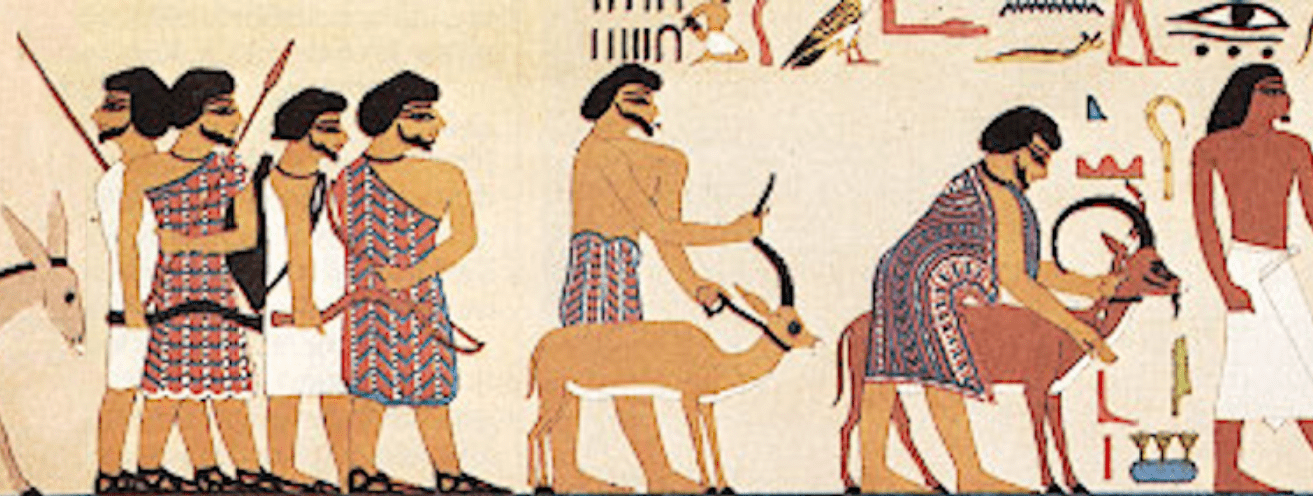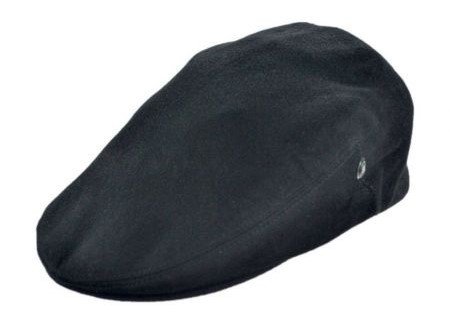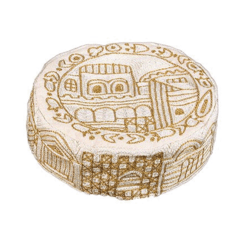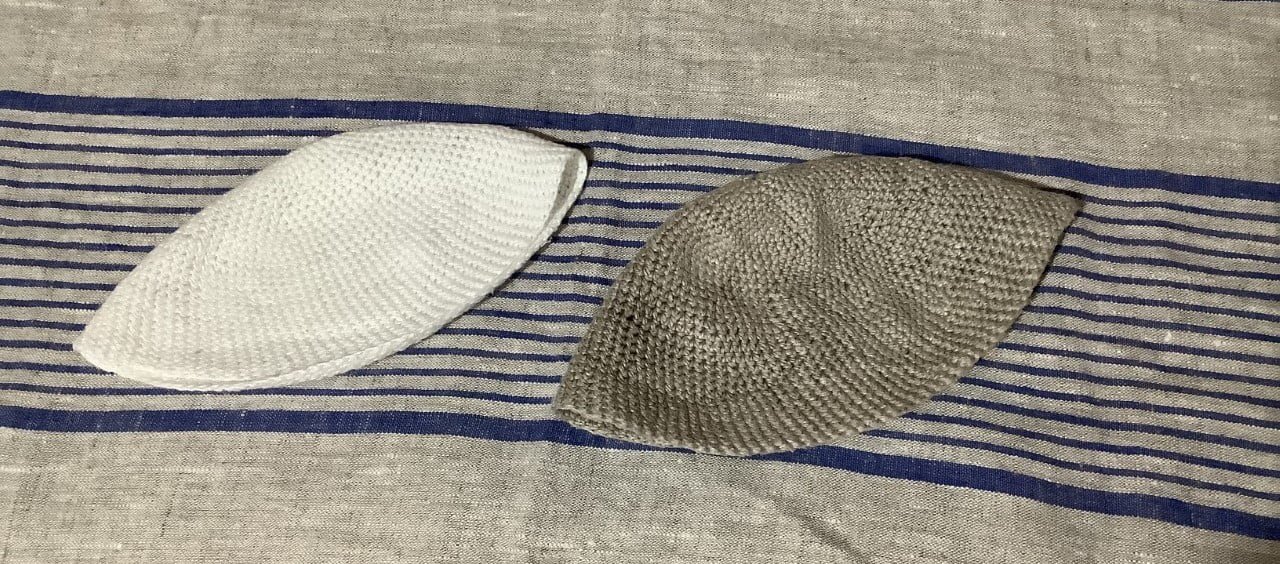As we said in earlier chapters, our clothing defines us to the outside world. It speaks of who we are. Because of this, it is understandable that people might not to want to wear a head covering if Yahweh does not require it, because the inclination is not to want to set ourselves apart, but rather to fit in with the world. Further, many people find head coverings physically uncomfortable. However, if Yahweh commands something, or if He wants us to wear something, we should wear it (and want to wear it). So let us be clear about what Yahweh wants, so we can first sit down and count the cost, and then gladly conform to His will.
There is a long running debate about head coverings for men and women. These are very contentious, even explosive issues, and many people feel extremely strongly about them. However, there are also grave errors in some of the arguments, and I have seen people deny Shaul’s election as an apostle over this issue, so it is important to get it right.
You will no doubt be faced with these same questions, so in this chapter we want to give you the information you need to deal with these important issues.
Commanded vs. Implied vs. Pleasing to Yahweh
To begin this study, we need to acknowledge that there can be a difference between what Yahweh commands, what Yahweh implies, and what is most pleasing to Yahweh. Ideally those three things run together, but in practice they can often be different, so we need to make a distinction, and encourage people toward that which is most pleasing to Yahweh. That is to say, while Yahweh will never force us to conform to His will, if we love Him, and want to please Him, we should choose to conform ourselves voluntarily.
Because Yahweh does not command head coverings for the average man or unmarried woman in the Torah, we cannot require the average Israelite man or unmarried woman to cover his or her head. (This is especially true in the dispersion, under the order of Melchizedek.) However, that does not mean that it is not something Yahweh wants. As we will see, there are many things that Yahweh wants, which He does not outright command (especially in the Melchizedekian order), and yet He still wants them.
Levitical Head Coverings: Torah Commands
Yahweh does command head coverings for the Levitical order, as part of an on-duty uniform. For example, Exodus 29:6 tells us that the high priest was to wear both a turban and a crown as part of his on-duty uniform.
Shemote (Exodus) 29:6
6 You shall put the turban on his head, and put the set-apart crown on the turban.
Aharon’s sons were also told to wear hats when they came into the set-apart place, so they would not incur iniquity, and die. This is a statute forever, and as we will see, it will apply to the Melchizedekian order also, after Armageddon.
Shemote (Exodus) 28:40-43
40 “For Aharon’s sons you shall make tunics, and you shall make sashes for them. And you shall make hats for them, for glory and beauty.
41 So you shall put them on Aharon your brother and on his sons with him. You shall anoint them, consecrate them, and sanctify them, that they may minister to Me as priests.
42 And you shall make for them linen trousers to cover their nakedness; they shall reach from the waist to the thighs.
43 They shall be on Aharon and on his sons when they come into the tabernacle of meeting, or when they come near the altar to minister in the set-apart place, that they do not incur iniquity and die. It shall be a statute forever to him and his descendants after him.”
For a third witness, Exodus 39 tells us that while the high priest was to wear a turban (and a crown), his sons were to wear “exquisite hats.”
Shemote (Exodus) 39:27-29
27 They made tunics, artistically woven of fine linen, for Aharon and his sons,
28 a turban of fine linen, exquisite hats [מִּגְבָּעֹת] of fine linen, short trousers of fine woven linen….
Strong’s Hebrew Concordance defines these exquisite hats as migba’ot (מִּגְבָּעֹת). Migba’ot is the plural of migba’ah, a hemispherical cap.
OT:4021 migba`ah (mig-baw-aw’); from the same as OT:1389; a cap (as hemispherical).
When we look up the reference at OT:1389, we see that this hemispherical cap looked like a little hill.
OT:1389 gib`ah (ghib-aw’); feminine from the same as OT:1387; a hillock: -hill, little hill.
The description of a hemispherical cap that looks like a little hill sounds like the large traditional Jewish skullcap, except the Levitical version was made of white linen. However, these hats were only worn while on duty, inside the tabernacle or temple. The Levites took this uniform off (and put on other clothes) when they went outside. This means they did not wear them every day.
Vayiqra (Leviticus) 6:11
11 “Then he shall take off his garments, put on other garments, and carry the ashes outside the camp to a clean place.”
We don’t know if the Levites wore other head coverings when they were off duty, but probably they did, as the Levites were highly respected in Israel, and it is normal for people to want to emulate those they respect. Yet it may have been different before the Torah was given.
The Headband: Symbol of Authority?
Let us consider again the Egyptian hieroglyph called the Procession of the Aamu (i.e., Aramu, or Arameans, referring to Avraham the Aramean/Syrian), which many believe depicts the Israelites going down into Egypt.


The men do not appear to have anything on their heads, which makes sense if we consider that this was before the Levitical Torah was given, and Israel was still under the Melchizedekian order, and that the Melchizedekian order was external to Israel at that time. That is, the average Israelite male was not a member of the royal priesthood that Kepha (Peter) speaks of.
Kepha Aleph (1 Peter) 2:9
9 But you are a chosen generation, a royal priesthood, a set-apart nation, His own special people, that you may proclaim the praises of Him who called you out of darkness into His marvelous light….
Hieroglyphs speak in symbolism, so the four women might symbolize Leah, Rachel, Zilpah, and Bilhah. However, whether or not they symbolize Israel’s four wives, they are all wearing similar headbands. This suggests it is a symbol of authority on their heads.
In ancient times, many cultures required women (and especially married women) to cover their hair or to wear some a symbol of her husband’s authority and protection on her head. (This is much like the modern tradition of the wedding ring, except it involves putting something on the head.) In such cultures, not to wear a head covering was seen in much the same sense as taking off one’s wedding ring. That is, it advertised one’s availability (and if one was married it was seen as severely disrespecting one’s husband’s authority. In some cultures, it was even considered cause for divorce).
The Torah Implies Head Coverings for Wives
While Yahweh never says, “a married woman must cover her head,” the Torah of the Jealous Husband clearly implies head coverings for wives. In Numbers 5:18, when the priest stands the jealous husband’s wife before Yahweh, he uncovers her head. Clearly, he can only do this if her head is already covered.
Bemidbar (Numbers) 5:18
18 “Then the priest shall stand the woman before Yahweh, uncover the woman’s head, and put the offering for remembering in her hands, which is the grain offering of jealousy. And the priest shall have in his hand the bitter water that brings a curse.”
The word uncover is Strong’s Hebrew Concordance OT:6544, para (פָרַע), referring to loosening her head covering (and by implication, exposing her hair).
OT:6544 para` (paw-rah’); a primitive root; to loosen; by implication, to expose, dismiss; figuratively, absolve, begin:
KJV – avenge, avoid, bare, go back, let, (make) naked, set at nought, perish, refuse, uncover.
Part of the ritual is for the priest to remove the wife’s symbol of authority and protection. Whether it was a head band, or a different type of covering, or exactly how much of the wife’s hair is covered is not clear. However, it is clear that she must already be wearing something symbolizing her husband’s headship and protection.
Some people reject the implied commandment to cover the head (or otherwise to wear a symbol of authority) based on the fact that Yahweh does not directly say, “a married woman must cover her head”, but this is not a good argument. There are many commandments in the Torah that are only implied, and which yet have to be obeyed. For example, in The Torah Calendar, in “Aviv Barley and the Head of the Year”, we see that Elohim wants us to bring Him the very first sheaf of immature barley (aviv or carmel) 15-20 days after we declare the head of the calendar year.
Vayiqra (Leviticus) 2:14
14 ‘If you offer a grain offering of your firstfruits to Yahweh, you shall offer for the grain offering of your firstfruits green heads [aviv] of grain roasted on the fire, [or] grain beaten from full heads [i.e., carmel].
Yet while the commandment is clear, how we arrive at the solution is not obvious. As we show in that article, the only way to fulfill this commandment is to wait until the green immature barley emerges from the stalk (or what is called the boot stage), and then to wait until the next first crescent sliver of the new moon is seen from the land of Israel. No other combination works. Yet nowhere does Yahweh say, “wait until the barley emerges from the boot, and then when the next first crescent sliver of the new moon is seen from the land of Israel, that is the start of your year.” However, that is the only way to fulfill the command, and the fact that it takes a lot of study to arrive at that conclusion does not change the fact that this is what Yahweh wants. So, the fact that Yahweh never says, “Married women should cover their heads” is not a good argument against the requirement for married women to cover their heads, because the requirement is clearly implied in the Torah of the Jealous Husband.
Judah’s Confusion Due to Fence Laws
Orthodox Jews realize that the ancient custom was for Israelite men and women to cover their heads. They also realize that the Levitical priesthood was commanded to cover their heads. However, because of Judah’s penchant for adding what they call “fence laws” to the Torah, they do some strange things with this information.
Because the rabbinical order descends from the order of Levi, Judah commands all Jewish males to cover their heads, especially in the synagogues. This is incorrect in that it extends the command meant specifically for the Levitical order to all Jews.
Based on certain rulings in the Talmud, some Hasidic Jewish women shave their heads entirely, so that no one can ever see their hair—and even then they cover their wigs. This is taking things to unnecessary extremes.
Ephraim’s Confusion Due to Bad Translation
If Judah takes things in strange directions because of the Talmud, Ephraim also takes things in some strange directions because he mistranslates 1 Corinthians 11. Most popular versions get 1 Corinthians 11 wrong, so we will look up the meanings of key words as we go.
Corinth was a port city, and port cities tend to have much lower moral standards than non-port cities. Corinth was also a center for temple cult prostitution, so the moral standards were even more degraded. If we will recall, in chapter 5, Shaul castigated the Corinthians for allowing a sexually immoral man into their camp.
Qorintim Aleph (1 Corinthians) 5:1-2
1 It is actually reported that there is sexual immorality among you, and such sexual immorality as is not even named among the Gentiles — that a man has his father’s wife!
2 And you are puffed up, and have not rather mourned, that he who has done this deed might be taken away from among you.
The greater overall context of First Corinthians, then, is that Shaul is telling us, “I realize that you are a port town, and that you also are a center for temple cult prostitution, but you are not following the ancient Hebrew ways here! Let me tell you what Hebrew men and women both do, and do not do.” In that context, as we begin chapter eleven, Shaul tells us to imitate him, just as he also imitates Yeshua.
Qorintim Aleph (1 Corinthians) 11:1
1 Imitate me, just as I also imitate Messiah.
As a devout Jew, Yeshua surely kept the ancestral traditions, which included covering His head. Then in verses 2 and 3, Shaul reminds us again how important it is to keep the ancestral traditions, which inform us of who we are, and define us. He also lays the groundwork to remind the readers that everyone in Nazarene Israel is under Elohim’s headship and authority, and as such we ought to all have a symbol of His authority on our heads.
Qorintim Aleph (1 Corinthians) 11:2-3
2 Now I praise you, brethren, that you remember me in all things and keep the traditions just as I delivered them to you.
3 But I want you to know that the head of every man is Messiah, the head of woman is man, and the head of Messiah is Elohim.
However, Shaul’s meaning starts to get lost in verse 4, because of some bad translation. Verse 4 tells us that if a man prays or prophesies with his head covered, that it will dishonor his head (either Yahweh, or him). However, that makes no sense. We already saw how Yahweh told the Levitical order to cover their heads, and He would not tell the Levites to do something that would dishonor either Him or them. The idea might seem to make sense to Greco-Roman Babylonian Christians who believe the Torah has been discarded, but it makes no sense to anyone who understands that the Torah is still for today.
1 Corinthians 11:4 MISTRANSLATED
4 Every man praying or prophesying, having his head covered [κατὰ], dishonors his head.
The word covered is Strong’s New Testament NT:2596, kata (κατὰ). As we will see, this does not refer to a man’s head covering. Rather, it refers to a man having a veil or scarf hanging down on his head (like a woman’s veil).
NT:2596 kata (kat-ah’); a primary particle; (prepositionally) down (in place or time), in varied relations (according to the case [genitive case, dative case or accusative case] with which it is joined):
Male temple cult prostitutes were often bisexual, and they could also dress as women. So what Shaul is really saying here is, “I know Corinth is a center for temple cult prostitution, but it is not alright for men to wear women’s head scarves or veils. Hebrew men don’t do that.”
1 Corinthians 11:4 CORRECTED
4 Every man praying or prophesying, having his head veiled, dishonors his head.
However, then in verses 5 and 6, Shaul says that every woman who prays or prophesies with her head not wholly covered dishonors her head. It is important to note that while this word is often mistranslated simply as “covered” (as in verse 4), it is a different combination of words (with a different meaning).
Qorintim Aleph (1 Corinthians) 11:5-6
5 But every woman who prays or prophesies with her head not wholly covered [οὐ κατακαλύπτεται] dishonors her head, for that is one and the same as if her head were shaved.
6 For if a woman is not wholly covered [οὐ κατακαλύπτεται], let her also be shorn. But if it is shameful for a woman to be shorn or shaved, let her be wholly covered.
In verse 5 and 6, the words wholly covered is the Greek combination oo katakalupto (οὐ κατακαλύπτεται). The first word oo means no or not, and the second word is actually a combination of two words, first kata (which as we saw means down, like a veil), and then also kalupto, meaning wholly or completely. Strong’s New Testament Concordance defines this word as meaning, to cover wholly, i.e., to veil.
NT:2619 katakalupto (kat-ak-al-oop’-to); from NT:2596 and NT:2572; to cover wholly, i.e. veil:
KJV – cover, hide.
Let us continue substituting the correct words as we progress in this passage.
Qorintim Aleph (1 Corinthians) 11:7-10
7 For a man indeed ought not to veil his head, since he is the image and glory of Elohim; but woman is the glory of man.
8 For man is not from woman, but woman from man.
9 Nor was man created for the woman, but woman for the man.
10 For this reason the woman ought to have a symbol of authority on her head, because of the angels [messengers].In verse 10, the Greek word for angel is Strong’s New Testament Concordance NT:32, aggelos (pronounced ang’-el-os). It has multiple meanings, one of which is pastor (i.e., a minister or messenger).
NT:32 aggelos (ang’-el-os); from aggello (meaning, to bring tidings); a messenger; especially an “angel”; (or) by implication, a pastor: KJV – angel, messenger.
A messenger can mean a literal angel, or a runner, but it can also refer to a messenger (i.e., an apostle). But why would Shaul say that a woman should wear a symbol of authority on her head because of the pastors, ministers, or apostles?
Israel is a family, and to do the job right, a minister must develop close personal relationships with everyone. The only issue with that is that it is natural for human beings to develop feelings for those they are in close contact with, and these feelings create a need for safeguards. This is especially true for leaders, because women are naturally attracted to men in positions of authority. Therefore, one countermeasure is for all the women (both single and married) to wear a symbol of Yahweh’s authority on their heads. It serves much like a wedding ring, to remind both the woman and the minister of her commitment to Elohim, and his need to focus on Elohim (and not on anyone’s flesh).
Because women are not visual creatures, some women tend to think that such visual reminders should not be necessary. However, women are not men, and women should be aware that such visual reminders can be very helpful for the men in remembering to keep their focus on Elohim.
In verse 13, Shaul asks the people to judge among themselves if it is proper for a woman to pray to Elohim with her head wholly uncovered.
Qorintim Aleph (1 Corinthians) 11:13
13 Judge among yourselves. Is it proper for a woman to pray to Elohim with her head wholly uncovered?
Some might answer an emphatic “yes!”, but this cannot be correct, as it contradicts what Shaul said in verses 5, 6, and 10, that a woman’s head should be wholly covered when she is praying or prophesying, or else she should be shaven or shorn.
There are more translation issues in verses 14 and 15. Many translations have Shaul suggesting that nature teaches us that it is a dishonor for a man to have long hair, when that is not true. (In fact male lions have longer hair than females, teaching just the opposite.)
Qorintim Aleph (1 Corinthians) 11:14-16
14 Does not even nature itself teach you that if a man has tresses of hair [κομᾷ], it is a dishonor to him?
15 But if a woman has tresses of hair [κομᾷ], it is a glory to her; for her hair is given to her for a covering.
16 But if anyone seems to be contentious, we have no such custom, nor do the assemblies of Elohim.
Further, the word in Greek is Strong’s New Testament Concordance NT:2863, komao (κομᾷ). This does not refer to long hair, but to tresses of hair (i.e., braided hair).
NT:2863 komao (kom-ah’-o); from NT:2864; to wear tresses of hair:
Do Long Tresses of Hair Replace Head Coverings?
As we saw earlier, Kepha (Peter) tells us that Shaul can be hard to understand, and that untaught and unstable people often twist his words to their own destruction (2 Peter 3:15-17).
First Corinthians 11:14-16 is vague enough that it can be interpreted many ways. Because of this, sometimes women say that if they have long hair, or if they wear their hair in tresses, then they do not need to cover their heads (meaning, long hair or tresses replaces the cloth head covering). However, if we will think about this just for a moment, it should be obvious that that is incorrect, as it is the opposite of what Shaul said in verses 5-10.
What Shaul really said to the wayward Corinthians is that it is a disgrace for men to veil their heads, or to braid or decorate their hair, as male temple cult prostitutes might do. And even if it is a glory for worldly (Greco-Roman) women to decorate their hair in tresses, the Hebrews have no such custom, nor do the assemblies of Elohim.
Consider how in 1 Timothy 2:8-10, Shaul tells us that righteous women do not braid their hair (or wear it in tresses), because that is not how humble women clothe themselves. Rather, humble women adorn themselves with good works (which is the truest garment).
TimaTheus Aleph (1 Timothy) 2:8-10
8 I desire therefore that the men pray everywhere, lifting up set-apart hands, without wrath and doubting;
9 in like manner also, that the women adorn themselves in modest apparel, with propriety and moderation, not with braided hair or gold or pearls or costly clothing,
10 but, which is proper for women professing righteousness, with good works.
“Do Not Let Your Adornment Be Outward”
Another passage which causes confusion is 1 Peter 3:3-4. It does not translate well from the Greek, and many versions do the wrong thing with it, including the New King James Version translators.
The New King James Version (and others) suggest that a woman should not let her adornment be merely outward, but that she should also adorn herself inwardly (in addition to the outward appearance). I am putting the supplied word merely in italics, as it does not exist in the Greek.
1 Peter 3:3-4 NKJV (INCORRECT)
3 Do not let your adornment be merely outward — arranging the hair, wearing gold, or putting on fine apparel —
4 rather let it be the hidden person of the heart, with the incorruptible beauty of a gentle and quiet spirit, which is very precious in the sight of God.
If we remove the supplied word merely, we get a very different meaning. Instead of telling women to adorn themselves both outwardly and inwardly (by arranging the hair, etc.), we find that the women are told not to adorn themselves outwardly (such as with arranging the hair, etc.), but only inwardly and spiritually. This is a very different focus.
1 Peter 3:3-4 CORRECTED
3 Do not let your adornment be outward — arranging the hair, wearing gold, or putting on fine apparel —
4 rather let it be the hidden person of the heart, with the incorruptible beauty of a gentle and quiet spirit, which is very precious in the sight of Elohim.
Here is Young’s Literal Translation, for comparison.
1 Peter 3:3-4 YLT
3 whose adorning — let it not be that which is outward, of plaiting of hair, and of putting around of things of gold, or of putting on of garments,
4 but — the hidden man of the heart, in the incorruptible thing of the meek and quiet spirit, which is, before God, of great price…
If we go by the incorrect translation, it makes it seem as if the women should spend some time arranging and decorating their hair. In that case, the head covering should be small enough so as not to wholly conceal her hair. However, if we go by the literal meaning of the passage, the head covering can be of any size. It can be large enough to wholly conceal her hair (as 1 Corinthians 11 and the Torah of the Jealous Husband seem to say), or it can also hypothetically be a symbol of authority, such as a headband or a smaller head covering.
The Merging of the Priesthoods After Armageddon
We have already seen that after Armageddon and the Ingathering, Yahweh will take some of the Ephraimites for priests, and for Levites.
Yeshayahu (Isaiah) 66:20-21
20 Then they shall bring all your brethren for an offering to Yahweh out of all nations, on horses and in chariots and in litters, on mules and on camels, to My set-apart mountain Jerusalem,” says Yahweh, “as the children of Israel bring an offering in a clean vessel into the house of Yahweh.
21 And I will also take some of them for priests and Levites,” says Yahweh.
In context, this probably means that after Armageddon, Yahweh will merge what is left of the Melchizedekian order with what remains of the Levitical (i.e., rabbinical) order, to forge a renewed Levitical priesthood. At that time, the active commission will be Levitical, and thus we will have the same head covering requirements as the Levitical order. We will have an on-duty uniform to wear while serving in Ezekiel’s temple.
Further, when the Melchizedekian order is merged with the order of Levi, the Torah of the Jealous Husband will again be the letter of the law for Ephraim. That means it will again be right for wives to cover their heads.
No Forcing in the Order of Melchizedek
When the priesthoods are merged and the renewed Levitical Torah serves as the constitution of the land of Israel, there will have to be a standard set for covering the head. Probably that standard will be the same as the existing Orthodox Jewish (not the Chasidic) standard, which is a full head covering of the type Shaul describes in 1 Corinthians 11. You can see the Orthodox women wearing these kinds of head coverings in many different styles. The idea is the same as the old Middle Eastern standard, which is that when they go out, they put their hair up, and when they come back home, they let their hair down. Only their husband and their family members get to see their hair. This is the standard which should be encouraged, but not forced.
For leaders, if you know that it is not wrong for a man to pray or prophesy with his head covered, and if you know that the restored Levitical order will have to cover their heads in the renewed temple, and you know that Yeshua and His apostles undoubtedly wore a head covering all of the time, then why not begin to cover your head while serving now?
And if we are Yeshua’s bride, and if a bride covers her head as a sign of accepting her husband’s authority and his protection, then shouldn’t we all cover our heads, all of the time? Or at the very least, shouldn’t we all wear a symbol of Yeshua’s authority on our heads all of the time, indicating that Yahweh-Yeshua is our authority, our protection, and our covering?
About the Traditional Protestant Flat Cap
We are not in a temple environment, so there is no need to wear a uniform. However, as we mentioned in earlier chapters, there is a need for a uniform, because 49% of our Jewish brothers and sisters are open to learning about Yeshua and His teachings. Clothing is extremely important to Jews, and many more of them might be open to us, if we had a clothing style to help define us. And it is in this light that we recommend the traditional Protestant flat cap and kippa combination.
We have a difficult relationship with Martin Luther. He said some very anti-Semitic things later in his life, but like all of the Reformers, he wore a flat cap. And since Ephraim technically is being restored through the Protestants, it makes sense to adopt that style.

John Calvin was another highly influential Protestant leader, and he (and most other Protestants) also wore a flat cap. While a flat cap is not necessary for all types of clothing, when one wears a suit it is nice to have a hat to cover the kippa, and not only does the flat cap work well, but you can also wear it when driving a car, or other activities where it is not possible to wear a fedora (such as the Orthodox wear).

Again there is no uniform requirement, but there are times when it benefits to wear a suit. If brother Judah is known for his black suit and black fedora, and we should wear something other than that, then our suggestion would be that whenever we need to wear suits, it should be dark suits, and flat caps. That seems to be the Protestant tradition, and so it is true to our heritage.

If you are bald, you probably want to wear a knit linen kippa underneath the flat cap, and change it every day.
Other Styles
If you want to wear a different style of kippa or head covering, you may. Another popular style is called the Bucharian kippa. It is essentially what is called a pill box hat. This one is decorated. We are working on a style for the Nazarene sect (with blue and white striping), which will help you be identified as a Nazarene (or Nazarene friendly) from a distance, which is very desirable from the standpoint of witnessing.

Styles to Avoid
The only thing we would recommend is that you avoid anything actively used by our Orthodox brethren, as this tends to cause resentments. Also, we advise avoiding black kippot, because Judah wears black kippot to symbolize his mourning at the destruction of the Second Temple. However, we are not in mourning for the Second Temple. Rather, we are rejoicing that Yeshua has risen, so natural linen on weekdays and white on the Sabbath and festivals is a much better color choice for us.
Also, we would recommend that you avoid the very small flat “sun disk” style of kippa (15 cm across or less), as the “sun disk” style of kippa may be associated with the Greco-Roman halo. (In other words, it may be inspired by or related to sun worship.) Our kippot should look like the Levitical migba’ah, which was a hemispherical cap, reminiscent if a small hill.







